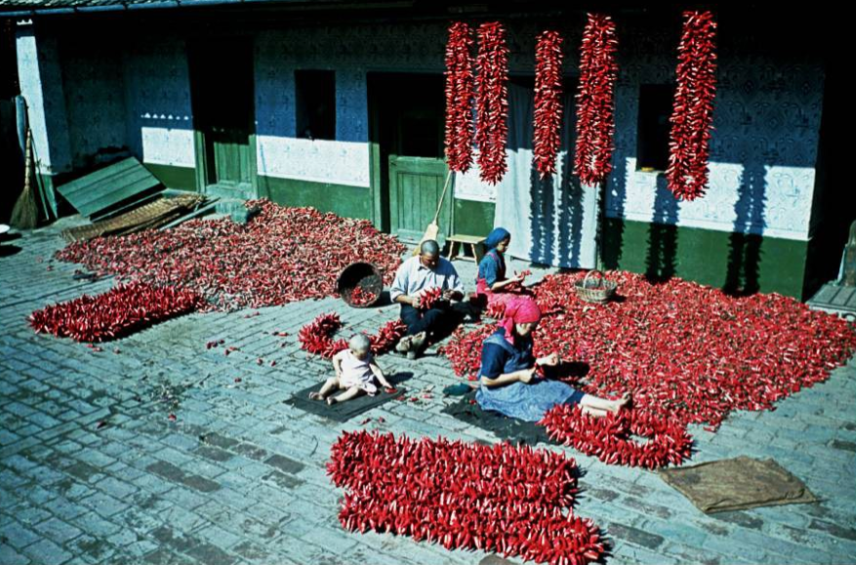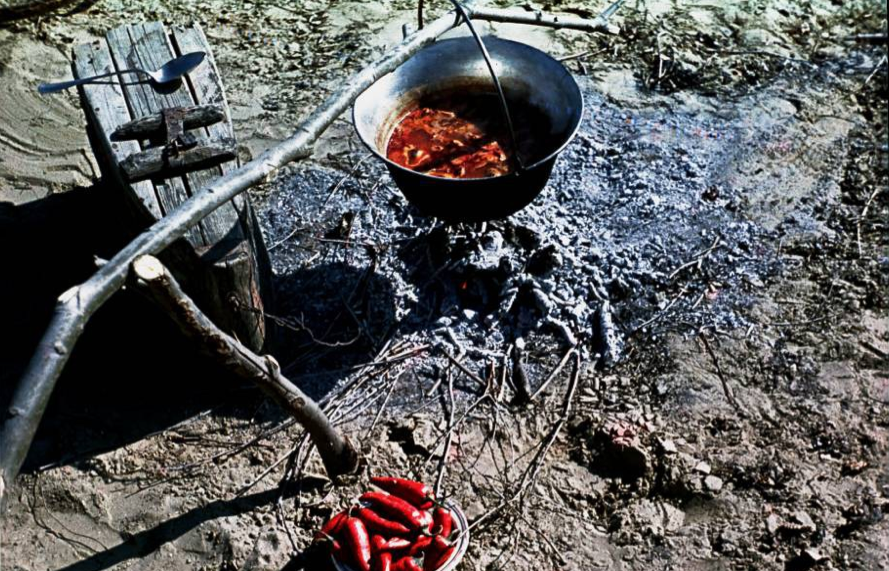Hungarian paprika is one of the most famous spices in the world, frequently used in traditional Hungarian dishes for both for its taste and its color. Sweet, mild and hot versions are all popular. The two most famous paprika producing towns in Hungary are Szeged and Kalocsa.
Hungarian paprika is also one of the most typical gifts or souvenirs tourists visiting Budapest, Hungary take home with themselves, as it is really characteristic and unique in Hungary, easy to use and easy to carry.
In the last few decades Hungarian housewives have also been using the cream or paste versions of paprika, finely or coarsely ground and mixed with vinegar, etc.
The most widespread paprika pastes and creams are Eros Pista (hot paprika cream in jar), Edes Anna (sweet paprika cream in jar), Pirosarany (tube).
Hungarian paprika is often found in Hungarian folk motifs on various folk art pieces (dresses, tablecloths, curtains, pillowcases, aprons, coats, etc.).
In the photo of the Hungarian Museum of Ethnography you can see the traditional way of storing and drying freshly picked Hungarian paprika. This old photo (diapositive) was taken by Mihaly Erdodi in 1940 on the Great Plain. After the paprika harvest the family sat outside and made girlands of paprika to let them dry in the sun before the wet season. We used to sit down with my grandfather to thread the paprika on meter long girlands and hung them out on the terrace. The paprika girland makes a great sight, but more importantly lets the paprika dry out. This way the paprika is ready to be used all year round, suitable for grinding (to turned them into the spice as you know it, paprika powder), a perfect method for long term storage to prevent the paprika get mouldy. Not all the paprikas were dried, some were used for instant use, like in the 1941 photo (Mihaly Erdodi, Museum of Ethnography), where Hungarian fish paprika is made in a kettle in the Great Plain. Can you see the big handful of paprika to be used in the fish paprika dish?

